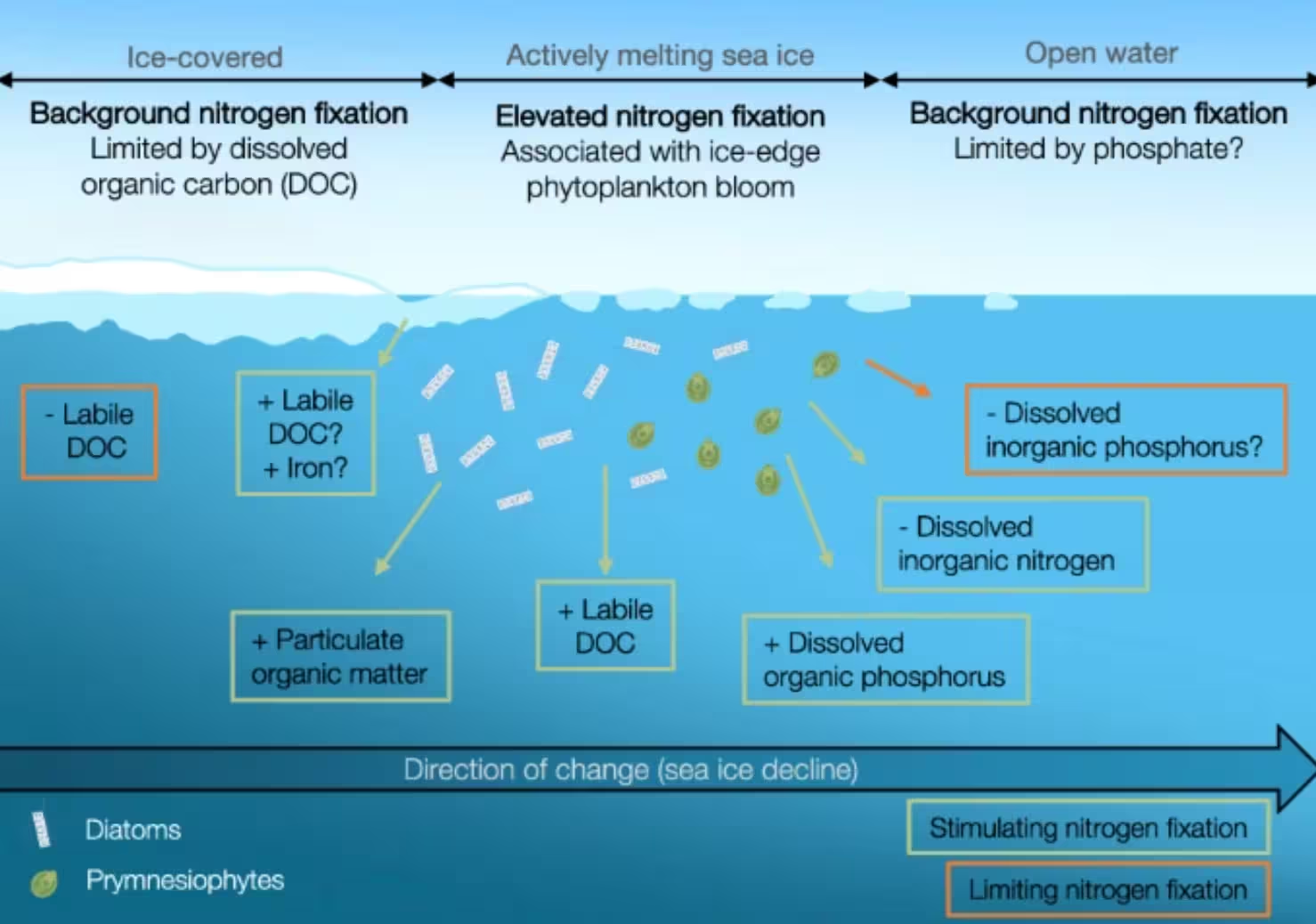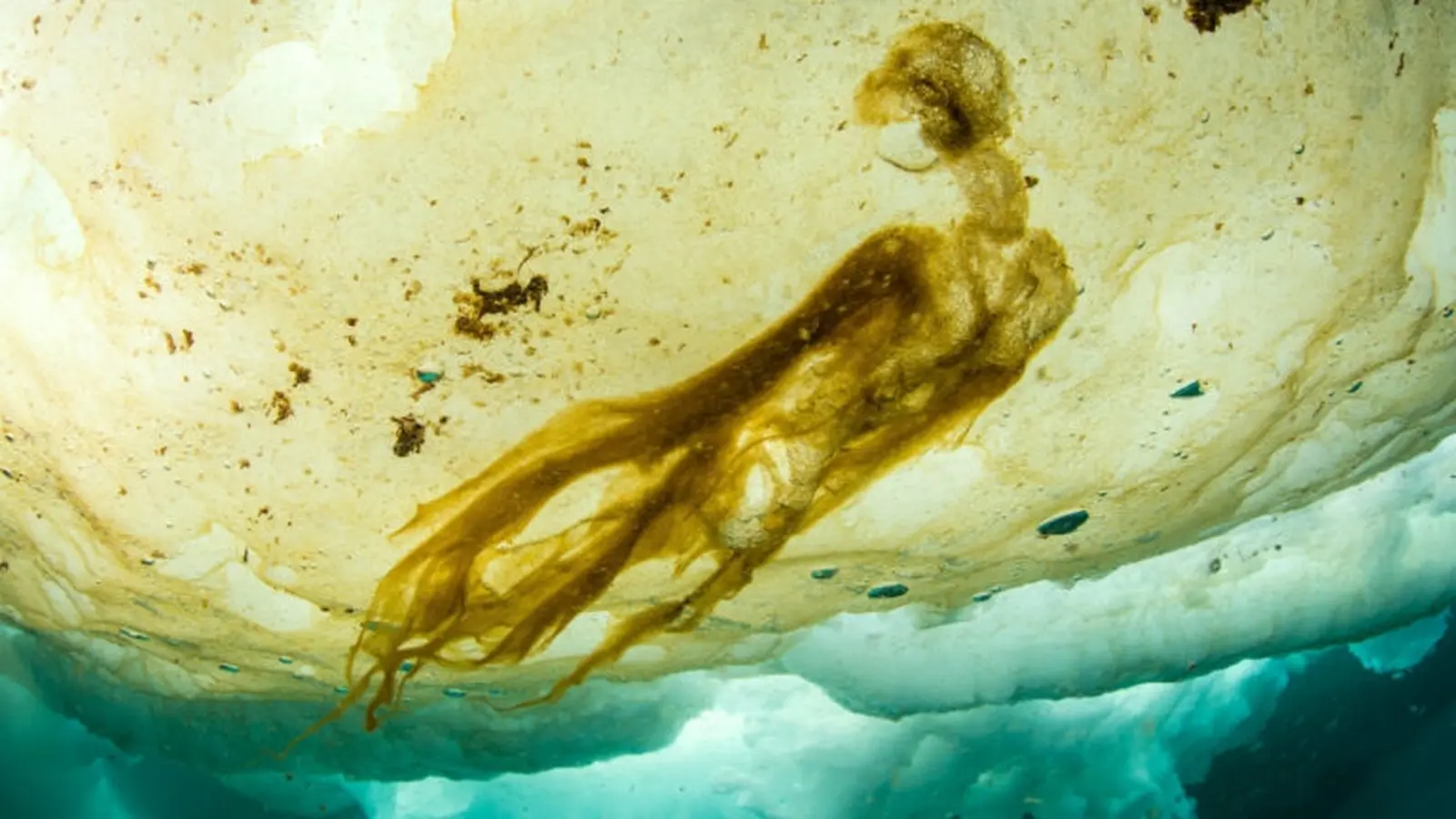5 Minutes
Scientists have found surprising microbial communities living beneath Arctic sea ice — organisms that carry the genetic tools to pull nitrogen from the atmosphere in a place we never expected. These discoveries could ripple through Arctic food webs and even affect global carbon and climate forecasts.
Hidden nitrogen factories under the ice
Nitrogen makes up roughly 78% of Earth's atmosphere, but most life cannot use it until it is converted into biologically available forms such as ammonia or ammonium. Microbes that perform this conversion are called nitrogen-fixers, and they form the base of many ecosystems by supplying a critical nutrient.
For decades, oceanographers assumed these nitrogen-fixing microbes — especially those that drive large-scale marine processes — were limited to warm, sunlit regions of the oceans. The Arctic, with its cold temperatures, low light and thick sea ice, seemed inhospitable. Recent research led by Lisa von Friesen at the University of Copenhagen challenges that idea.
Using samples from the Central Arctic Ocean and Eurasian Arctic, von Friesen’s team detected abundant non-cyanobacterial diazotrophs (NCDs): bacteria that possess genes for nitrogen fixation but do not rely on photosynthesis. While the researchers have not yet measured active nitrogen fixation directly in every sample, the distribution and genetic potential of these microbes strongly suggest they play a role in Arctic nitrogen cycles.
Why this matters for ecosystems and climate
These microbes are not simply a microbiological curiosity. NCDs can supply nitrogen to algae, and algae are the primary food source for tiny crustaceans, which feed small fish and, ultimately, larger predators. In short: more nitrogen could mean more algae, which could strengthen the entire Arctic food web.
"It was believed that nitrogen fixation could not take place under the sea ice because it was assumed that the living conditions for the organisms that perform nitrogen fixation were too poor," von Friesen says. "We were wrong."
There are climate implications too. Algae draw down carbon dioxide when they grow; if increased nitrogen availability leads to more algal biomass, the Arctic Ocean could sequester more CO2. "If algae production increases, the Arctic Ocean will absorb more CO2 because more CO2 will be bound in algae biomass," says marine microbial ecologist Lasse Riemann — though he cautions that the system is complex and other feedbacks might offset that effect.
Researchers also observed that the edges of sea ice tend to host higher concentrations of these nitrogen-fixing microbes and elevated inferred nitrogen-fixing activity. That pattern matters because Arctic sea ice is shrinking and becoming more fragmented as the climate warms. Opening seas and larger marginal zones could create habitats that favor nitrogen-fixers, potentially amplifying their impact.
Scientific context and next steps
Until recently, most models of marine nitrogen cycling and climate feedbacks did not account for robust Arctic nitrogen fixation. Von Friesen and colleagues argue that future climate and biogeochemical models should explicitly include Arctic nitrogen-fixing activity to better predict carbon uptake, food-web shifts and atmospheric exchanges.
Key next steps include direct measurements of nitrogen fixation rates under varying ice conditions, experiments that track how NCD-driven nitrogen flows into algal biomass, and incorporation of these processes into regional and global climate models. Improved sampling across seasons and during rapid summer melt will clarify when and where these microbes are most active.
Expert Insight
"Finding diazotrophs under sea ice changes our picture of polar ecosystems," says Dr. Maya Henderson, a marine biogeochemist at the Polar Research Institute. "If these bacteria are active, they could alter nutrient balances and carbon fluxes in a region that is warming faster than the global average. Models that omit this process risk underestimating Arctic biological responses and their climate feedbacks."

Sea ice decline and the potential impact on nitrogen fixation rates. (von Friesen et al., Commun. Earth Environ., 2025)
As scientists produce more field data and integrate microbial processes into models, the role of Arctic nitrogen-fixers will become clearer. For now, their presence beneath the ice is a reminder that even the coldest, darkest corners of our planet can host surprising life — and that those organisms can matter far beyond their microscopic size.
Source: sciencealert
Comments
atomwave
Hmm is this for real? seems like a big jump from finding genes to claiming ecosystem change. Need rates, seasonal data, and more sampling. but curious.
bioNix
wow, microbes under Arctic ice? mind blown. If these N-fixers ramp up algal blooms, whole food web could shift. skeptical but excited..


Leave a Comment